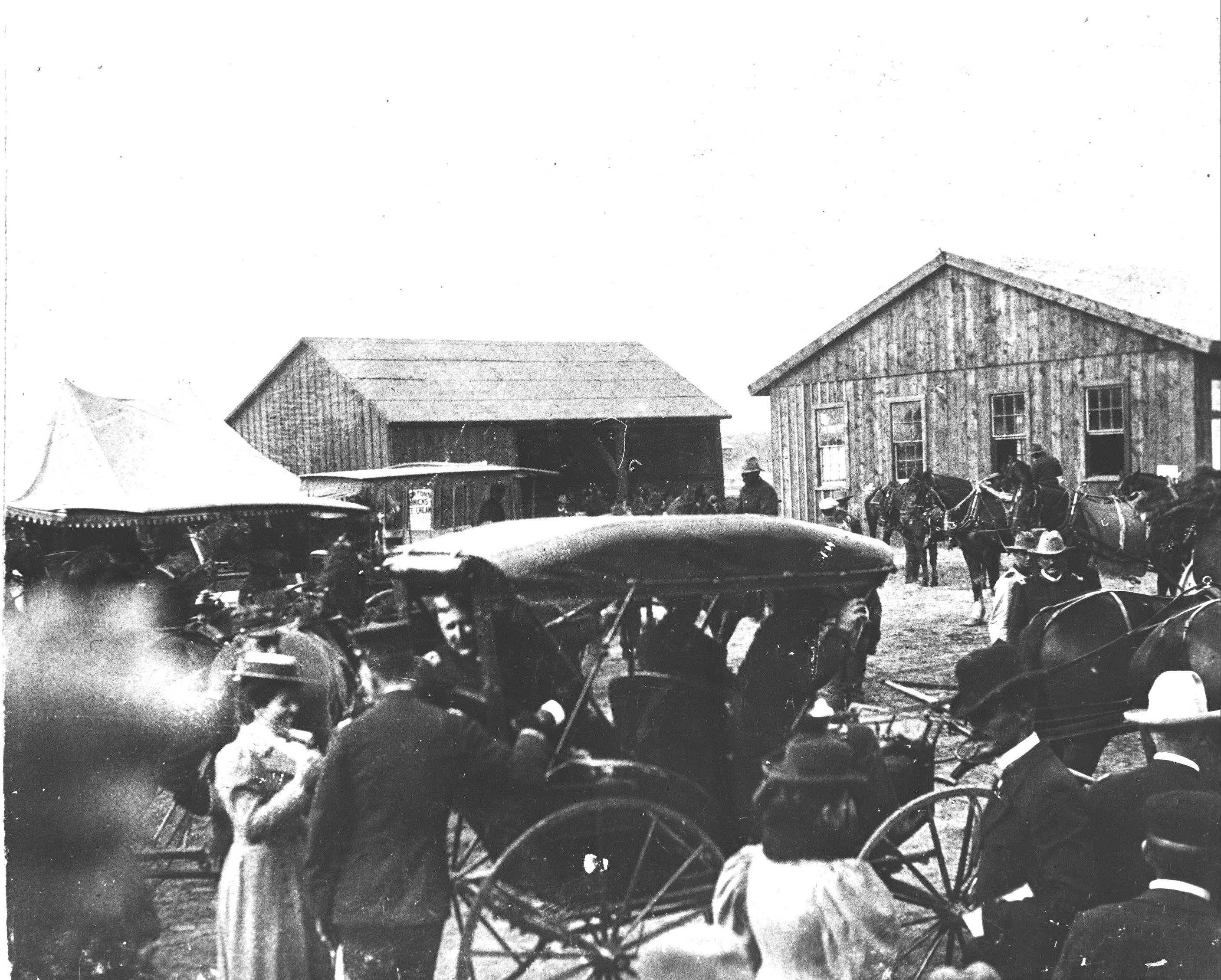 In 1899, almost a year after the Rough Riders left Montauk’s Camp Wikoff, the government decided to sell its property sitting unused at the vacant camp. “The site of Camp Wikoff is to be sold at auction,” reported the Ogdensberg Journal. “The property consists of one quartermaster’s warehouse, one commissary storehouse, four detention camp buildings, 22 hospital buildings, one laundry building, printing office building, electric lighthouse, bake shop, three pumphouses, three boarding houses, 250,000 feet of lumber, 50 cords of oakwood, and two cylindrical wrought iron filters with pipe and valves.”
In 1899, almost a year after the Rough Riders left Montauk’s Camp Wikoff, the government decided to sell its property sitting unused at the vacant camp. “The site of Camp Wikoff is to be sold at auction,” reported the Ogdensberg Journal. “The property consists of one quartermaster’s warehouse, one commissary storehouse, four detention camp buildings, 22 hospital buildings, one laundry building, printing office building, electric lighthouse, bake shop, three pumphouses, three boarding houses, 250,000 feet of lumber, 50 cords of oakwood, and two cylindrical wrought iron filters with pipe and valves.”
The account of the auction given afterward in the East Hampton Star is amusing, but also fascinating. Interest in the artifacts to be sold at the auction was intense, and in fact, extra trains from the Long Island Railroad brought “excursionists” from all parts of the Island to Montauk. On April 21, 1899, builders, railroad executives, and curiosity seekers converged on Montauk. Locals were also in attendance, like T.H. Conklin and Captain William D. Parsons, as well as some “lifesavers” from Ditch Plains and Hither Hills. Pound fishermen, who knew a thing or two about supplies, also showed up.
We don’t have a photograph of the auction, but this 1898 image of Camp Wikoff from the Carleton Kelsey collection gives a sense of the excitement that must have prevailed on auction day. We know from contemporary reports that once up and running, Camp Wikoff was a bustling scene of soldiers intermingling with visitors who came east on a regular basis. In fact, the buildings you see in this photo were sold at the 1899 auction a year later.
“When the excursionists reached Montauk depot at 12:30, they were shown to one end of the big commissary warehouse, where Auctioneer T.F. Archer’s Red Flag had been hoisted. A bountiful luncheon had been prepared by Montauk women, and had been laid out in the empty storehouse.” The auction that followed was an on-site, out-of-doors traveling event, as a caravan of carriages and wagons followed the auctioneer up and down Montauk’s hilly landscape. Bidders on foot made “shortcuts through the ravines and over precipices,” while carriages made the detour of winding roads polished smooth by soldier traffic only months earlier.
The auctioneer stood in his carriage, rattling off the lots. Incredible bargains were easily had, especially when the merchandise for sale might have had an association with typhoid or malaria. “Now, how much am I offered for this hospital building?” the auctioneer asked. After painstakingly getting his bidders to commit to a measly thirteen dollars, someone in the crowd yelled, “Any contagious diseases in that building?” “Yes,” was the response. Silence prevailed. The auctioneer had no choice. “Sold! For thirteen dollars.” Money was exchanged, recorded in a blotter, and the quartermaster’s agent, W.A. Benson, would paint the name and number of the building sold in black letters on the side.
A list of successful bidders and their lots of merchandise appeared in the Star article from April 28, 1899. The phrase “everything but the kitchen sink”comes to mind. The only difference here would be “everything AND the kitchen sink, and all the pots and pans, too.”

Reply or Comment